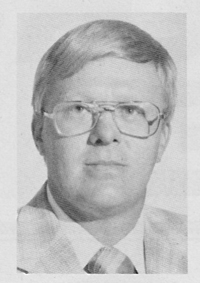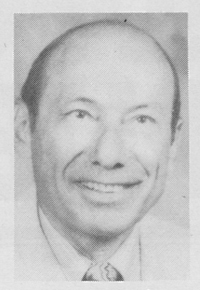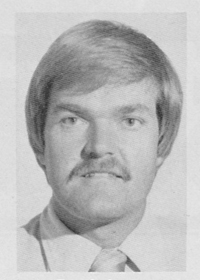JCO Orthodontic Practice Study: Practice Activity
The JCO Orthodontic Practice Study, conducted in the Spring of 1981, is an investigation into the economics and practice administration aspects of orthodontic practice in the United States in 1980. Questionnaires were sent to all those who could be identified as being in the active private practice of orthodontics in the United States. A total of 7558 questionnaires were mailed, and 1291 usable responses were received. This is approximately 17% of the population of United States orthodontists, which is an exceptionally broad data base from which to assess characteristics of orthodontic practice in the United States.
The primary objective of the study was to determine the present economic and management characteristics of orthodontic practices in the United States. A secondary objective was to determine if there are meaningful relationships among these characteristics. This series of articles will highlight the results that are of most interest to practicing orthodontists. This initial article will include characteristics that describe practice activity and some of their important interrelationships. in succeeding months, future articles will analyze more of the study data to find out what contributes to above average income and case starts, why a substantial number of practices did not grow, what management tools and practice building techniques may be effective, whether the amount of delegation is significant, and much more useful information.
In presenting the data, medians will be used wherever it is felt that the median will be a more dependable characterization than the mean. The median is the middle rank, with 50% of the cases above it and 50% below it. The mean is an average, which can be influenced to a greater extent by values that are extremely high or extremely low. This approach and the number of responses leads us to believe that the results of this study are valid and representative of most orthodontic practices in the United States in 1980.
Case Starts
Case starts included both full treatment cases and partial treatment cases started in 1980. Solo practitioners (incorporated and unincorporated), who constituted over 85% of the respondents, had a median number of 140 case starts (Table I). However, the unincorporated sole proprietors reported a median of only 100 case starts, while the incorporated one-orthodontist practices reported a median of 150. The reason for the disparity may well be because younger practitioners, with fewer case starts, may delay incorporating and some older practitioners who never were incorporated may be tapering off. Seventy percent of solo practitioners were incorporated.
There seems to be a strong relationship between case starts and the number of years in orthodontic practice. These figures are given in Table I for one-orthodontist practices. As one might expect, the median number of case starts is lowest for the first two years in practice and increases as the number of years in practice increases. The 6-20-years-in-practice range seems to be the "golden years" with the highest median number of case starts. There was a dropoff to a median of 106 case starts after that time, which may reflect a desire on the part of older orthodontists to reduce their practice activity.
Two-orthodontist partnerships were the most representative of partnerships. Others were not reported in sufficient numbers to permit presentation of the data. Two-orthodontist partnerships reported a median number of 200 case starts. Two-orthodontist corporations reported 250 and, since this form constituted 86% of two-orthodontist practices, the overall median for two-orthodontist practices was 244. Two-orthodontist practices constituted 11½% of the reporting group.
Three-orthodontist practices constituted less than 2% of the responses. All usable three-orthodontist responses were incorporated practices. These data, because of the small number, were considered to be useful only as a unit. Any further breakdown would result in too-small numbers. Practices with four or more orthodontists were even more rare, and the data for these practices could not be given serious consideration.
There does not appear to be a consistent pattern of case starts to community size, beyond a suggestion that two-orthodontic practices in metropolitan areas may fare better than others for case starts. It cannot be said that any of the four community sizes shows a superiority for the number of case starts.
It can be said that the data does show that, while the number of case starts increases as the number of orthodontists in the practice increases, the degree of increase is not a straight multiple. The median for the one-orthodontist practice is 140 case starts; the median for the two-orthodontist practice is 244 case starts or 122 per orthodontist; and the median for the three-orthodontist practice is 300 case starts or 100 per orthodontist. Therefore, the multiple orthodontist practices reported fewer case starts per orthodontist than one-orthodontist practices. A possible explanation of this finding may be that some of the orthodontists in multiple-orthodontist offices do not practice full time.
Case Load--Active Treatment Cases
As was noted for the median number of case starts, there appears to be a definite relationship between the number of patients in active treatment and the legal status of the practice (Table I). Once again, unincorporated sole proprietorships seemed to carry a much smaller case load (200) than the one-orthodontist professional corporation (350).
There appears to be a remarkable uniformity with respect to the median case loads in the various-sized communities; and a definite trend exists with case load as a function of the number of years in orthodontic practice. As expected, the smallest active case loads (150) existed among the newest members of the profession. As the number of years in orthodontic practice increases, the number of active treatment cases increases to a maximum of 350 in the 11-20-year group.
As with the median number of case starts, two-and three-orthodontist practices appeared to have substantially fewer active treatment cases per orthodontist than the one-orthodontist practices.
Additional Cases
Respondents were asked to estimate the number of additional cases they could have handled in 1980, without increasing the number of chairs or the size of the staff. There was a strong tendency to select the number "50", and the overall median response to this item was 50 (Table I). With the exception of a few figures, there was remarkable similarity in the estimates provided. There did not appear to be any relationship between these estimates and the legal status of the practice, community size, the number of orthodontists in the practice, or the number of years in orthodontic practice.
Fees and Fee Increases
Fees for professional corporations seemed slightly higher than for the other forms of practice (Table II) but, again, that may reflect a preponderance of established practices in the incorporated group. An unusually large fee increase for the past two years for partnerships is difficult to explain. Since the partnership fees for child orthodontics appear to be substantially lower than others, it is possible that the increases were a bigger percentage of the lower fee.
Fees and fee increases appeared to increase directly as community size increased. The highest fees and fee increases appear to be in metropolitan areas.
There appears to be an interesting relationship between fees and fee increases and the number of years in orthodontic practice. As might be expected, there is a trend toward increased fees as the number of years in orthodontic practice increases. However, with the exception of the youngest practices (1-2 years), the percentage of fee increase seems to diminish as the number of years in orthodontic practice increases.
It may be significant that, across the board, there appears to be less than a 10% differential between the Child Case Fee and the Adult Case Fee. It should also be pointed out that, while orthodontists appeared to be increasing fees a total of 15.4% for the two-year period of 1979 and 1980, inflation for 1979 was 13.3% and for 1980 it was 12.4% (according to the Consumer Price Index).
Data were collected for mixed dentition treatment fees, but the responses were so obviously a mixture of minor treatment, Phase I treatment, and full treatment fees, that the data for mixed dentition fees could provide no useful information and will not be reported.
Gross Income
Unincorporated sole proprietorships reported a median gross income of $129,008, compared to $237,020 for one-orthodontist professional corporations (Table III). Nevertheless, it would be hazardous to conclude that the incorporated type of business organization leads to greater gross income for orthodontists. Many orthodontists may incorporate only after their practices have grown large enough to take advantage of the tax benefits that are associated with the incorporated form of practice.
Community size seems to have some relationship to practice gross income. The median gross income for practices in cities under 50,000 in population was around $200,000, while median gross income for those in cities over 50,000 population was considerably higher. These data to some extent support the conclusion that orthodontic practices in larger cities have greater gross incomes than those in smaller cities. However, as far as one-orthodontist offices are concerned, only those in cities of 50,000-500,000 reported median gross incomes much above $200,000. Since the median for gross income for the composites of all practices in the larger communities is larger than the medians reported for the one-orthodontist practices, it may be that this is due to having more dentists involved in large-city practices.
As one might expect, median gross income is positively related to the number of dentists involved in the practice. It is interesting that, as with case starts, the median gross income does not increase proportionately to the number of orthodontists in the practice. Median gross income reported for one-orthodontist practices was $200,002, compared to $359,883 for two-orthodontist practices, and $650,000 for three-orthodontist practices. Gross income per orthodontist is greater in one-orthodontist practices than in two- but less than in three-orthodontist practices.
There is a direct relationship between median gross income and the number of years in orthodontic practice. Once again, the figures are for one-orthodontist practices. As with case starts, orthodontists who have practiced only 1-2 years reported the lowest median gross income; those between 6 and 20 years in practice reported by far the highest median gross income; and those who have practiced more than 20 years seemed to tail off a rather large amount, probably due to a phasing down of some practices in this group.
Operating Expense
The median operating expense figures do not include the orthodontist's salary or personal income from the practice. As reported in Table III, the total operating expense for all practices was 49.7% of gross income. Incorporated practices seemed to report a lower overhead percent and their overhead appeared to decrease as the number of orthodontists in the practice increased. Partnerships seemed to have a lower overhead percent, as well. This was a part of the overall trend for overhead to decrease in all practices as the number of orthodontists increased. There did not appear to be any consistent relationship between operating expense and community size.
The overhead percent for one-orthodontist practices that are 1-2 years old was reported to be substantially higher (65.1%) than any other. Operating expense as a percent of gross decreased directly as the years in practice increased. It is to be expected that the expenses involved in beginning a practice would reflect the high overhead expense in the early years of practice.
Busyness
Respondents were asked to describe their busyness by checking one of the four alternatives presented in Table IV. Thirty-five percent of all orthodontists felt they were not busy enough and would like to have more patients, while only slightly more than 2% felt they were too busy. Less than 15% described themselves as "too busy" or "overworked" (combining those two columns), while more than 85% reported they "did not feel overworked" or "would like to have more patients" (combining those two columns).
From the two combined columns, there is a suggestion that practices in the smallest (under 20,000) and in the largest (over 500,000) communities may be slightly less busy than those in communities in between. Busyness seems to have a relationship to the number of orthodontists in the practice. One-orthodontist offices appear to be more in need of patients (36.6%) than offices with two orthodontists (23%) or three orthodontists (20%).
As might be expected, busyness also appears to be related directly to the number of years in orthodontic practice. Over 75% of those practicing 1-2 years felt in need of more patients. The percentage declined in direct relation to years in practice, reaching a low point for orthodontists who have practiced 11-20 years (26.6%). A somewhat greater need was expressed in practices beyond 20 years.
The most obvious and potentially important aspect of this practice busyness information is that a relatively large percentage of all orthodontists would like to have more patients. This may have ramifications for dental educators and dental manpower policy makers. Coupled with the fact that most orthodontists responding to the JCO study indicated that they could handle 50 additional cases without increasing the size of their staff or facility, it appears as though the present orthodontic delivery system could provide care for a minimum of 375,000-400,000 additional patients annually with no apparent difficulty.
Conclusions
The results for the study characteristics considered in this article suggest that:
1. Approximately 85% of orthodontists may be in solo practice.
2. The sixth to the twentieth year in orthodontic practice may be thought of as the "golden years" with the highest gross income, and the largest number of case starts and active treatment cases.
3. One-orthodontist practices reported more case starts and active treatment cases per orthodontist than practices with more than one orthodontist.
4. Community size does not seem to have an extraordinary relationship to any of the factors covered--case starts, case load, gross income, expense as a percent of gross, fees, or busyness.
5. Operating expense as a percent of gross income decreased with increased years in practice and with increased number of orthodontists in; the practice.
6. Fees increased with increased years in practice, but fee increases decreased as the number of years in practice increased. Also, there was little more than a 10% differential between the median fees of beginning practices and the highest median fees of more established practitioners.
7. Fees increased 15.4% in the last 2 years (1979 and 1980), while inflation increased 13.3% in 1979 and 12.4% in 1980.
8. Adult case fees exceeded child case fees by less than 10%.
9. Over 85% reported that they were "not overworked" or "would like to have more patients" Less than 15% described themselves as "too busy" or "overworked"
10. While multiple orthodontist practices seemed less in need of additional cases, all categories reported they could have handled an additional 50 cases without increasing the size of their staff or facility.
Summary
Based upon the results of the JCO Orthodontic Practice Study that were detailed in this article, it is possible to profile the general economic characteristics of orthodontic practice in the United States (Table V). Since over 85% of orthodontists responding to the study were in solo practices, the median figures for one-orthodontist practices have been used for profiling purposes, with the exception of case fees for which composite figures are used.
(TO BE CONTINUED) 




